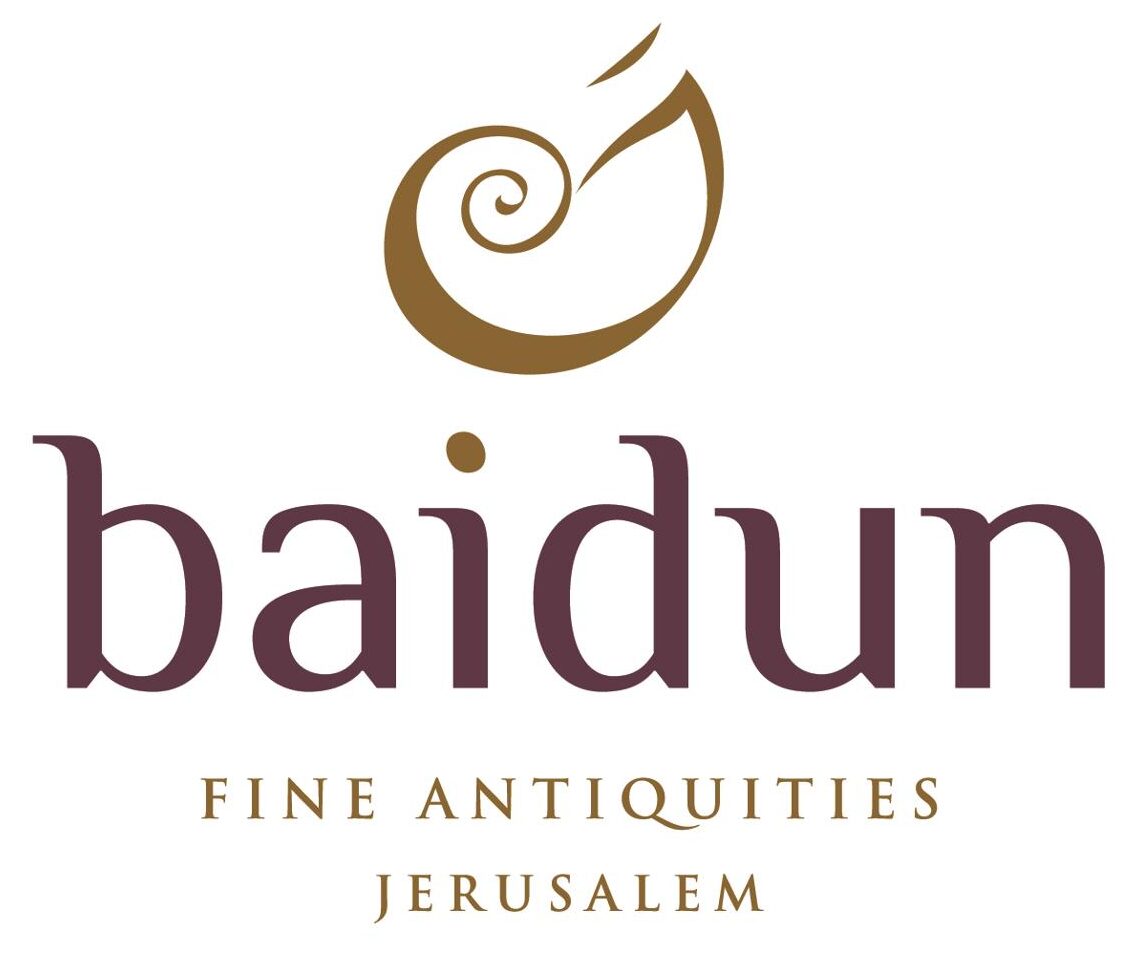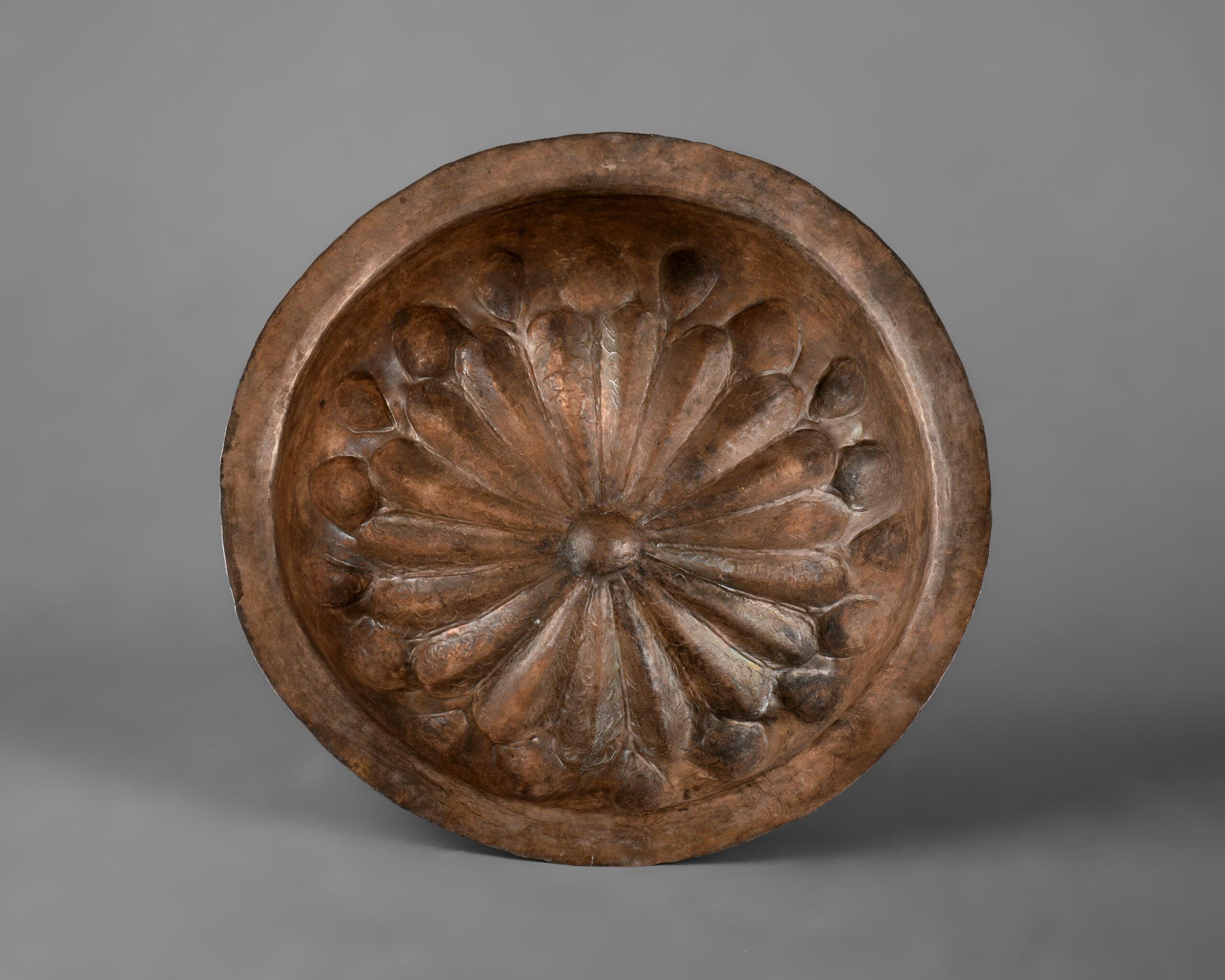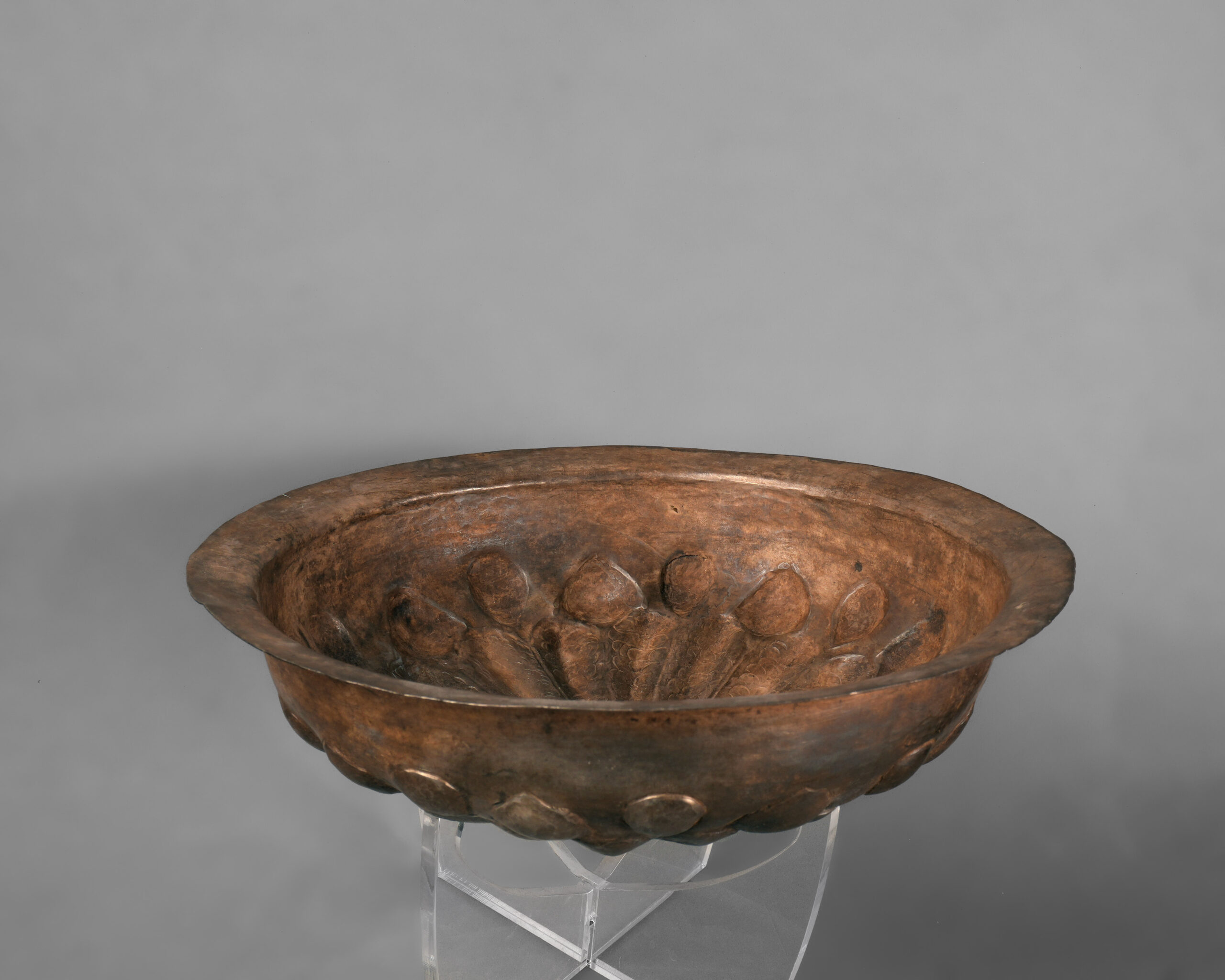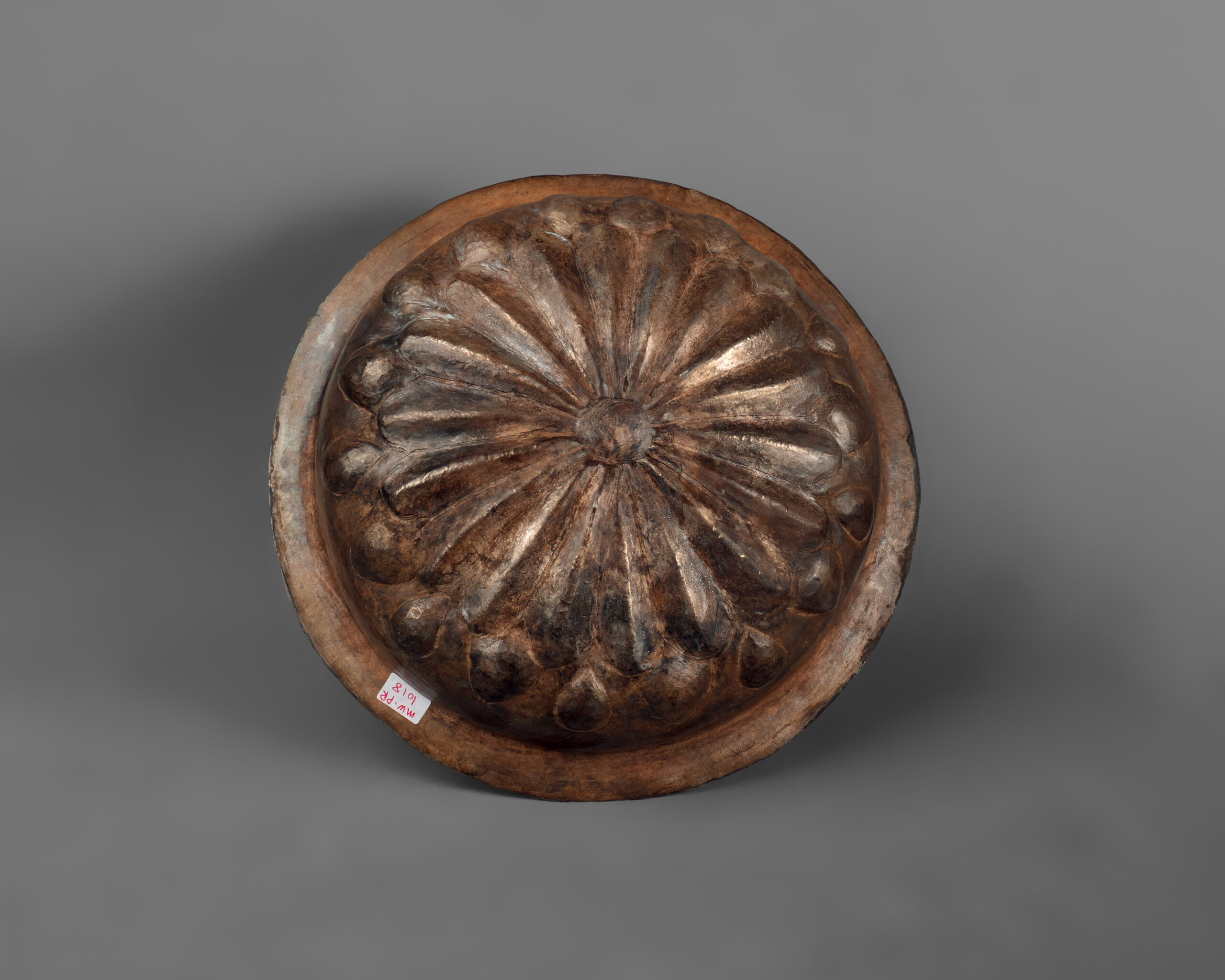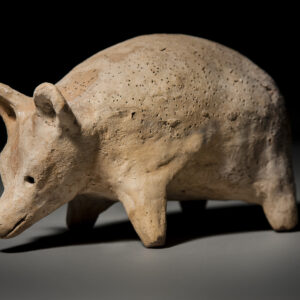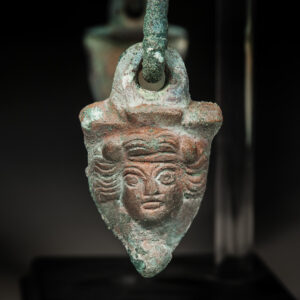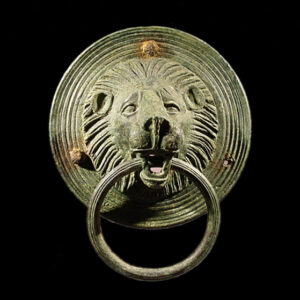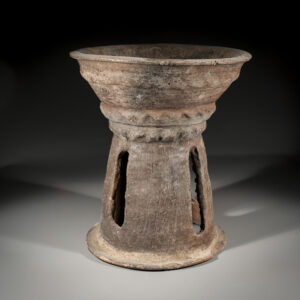From the Achaemenid period, particularly between circa 800-500 BC, numerous luxury vessels and ritual objects such as wine bowls are depicted in reliefs and artifacts recovered from excavations. These portrayals suggest that artisans began by shaping the vessel from a solid mass of silver, using a combination of chasing, hammering, and possibly casting techniques. The process would have involved roughing out the basic form, which was likely then refined through meticulous hammering and filing to achieve a symmetrical and balanced shape.
The large wine bowl in question exhibits a broad, rounded profile with a wide opening, designed to facilitate the pouring and serving of wine during banquets or ceremonial occasions. Its surface is decorated with intricate engraved motifs, which may include geometric patterns, stylized florals, or mythological symbols, indicative of the sophisticated ornamentation favored by Achaemenid artisans. These engravings would have been executed with precise metal tools, emphasizing symmetry and aesthetic harmony.
This vessel was crafted from silver, a metal highly prized in Persian courtly culture for its brilliance and symbolic association with purity and wealth. The silvery sheen and fine workmanship would have signified the high status of its owner, most likely a noble or a member of the royal court. The rim of the bowl is reinforced and slightly everted, suggesting a functional consideration to prevent damage and facilitate handling.
The craftsmanship and fine detailing of this bowl reflect a high level of technological skill, characteristic of the Achaemenid metallurgists. Such a substantial vessel was probably used in prestigious contexts, including royal banquets or religious rituals, serving both a utilitarian and decorative purpose.



